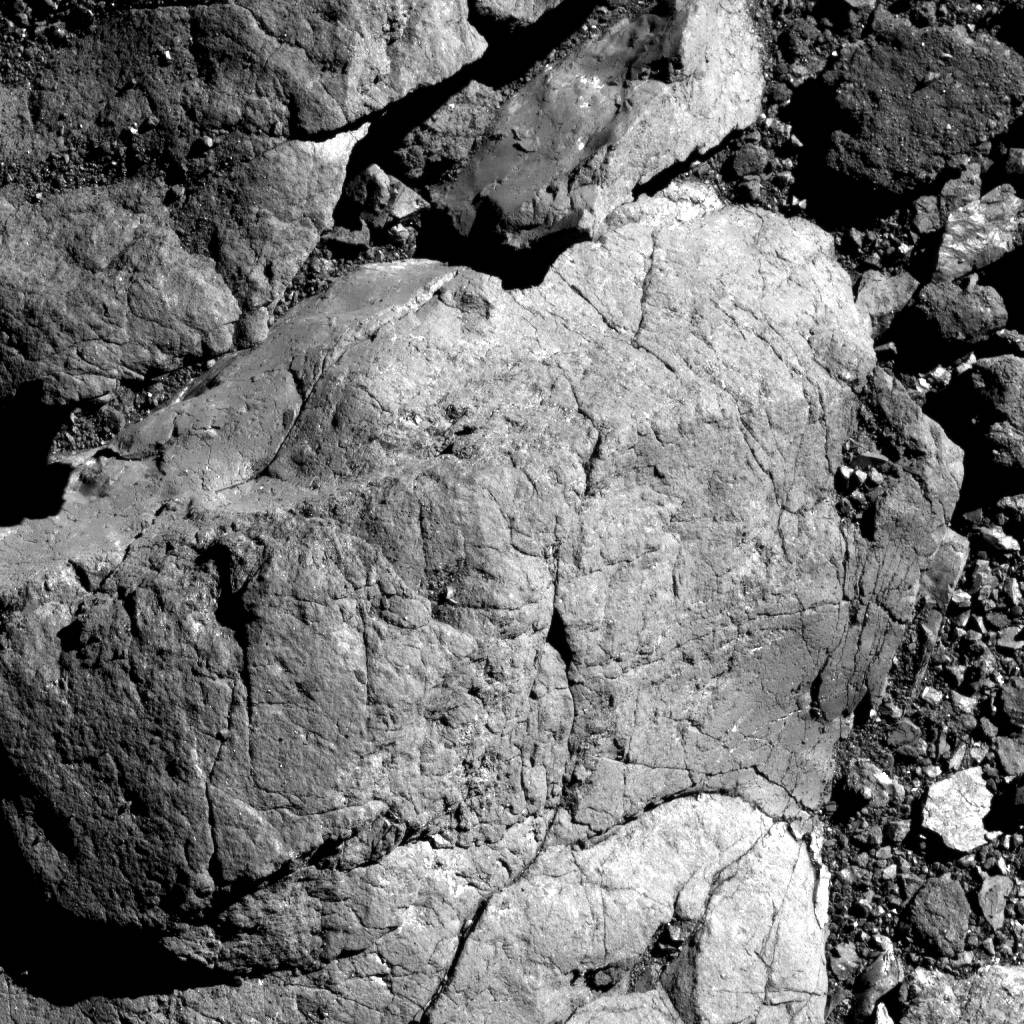This information will help scientists estimate how long it takes for boulders on asteroids like Bennu to break down into smaller particles that could be ejected into space or left on the asteroid’s surface.
Tens of thousands of years may sound rather slow, but “we think it will take millions of years for the surface of asteroids to regenerate,” said Marco Delbo, a senior scientist at the French Côte d’Azur University, the French National Centre for Scientific Research, and the French Côte d’Azur Observatory. Lagrange, Nice, France, lead author of a June 2022 paper in Nature Geoscience. “We were surprised to find that the aging and weathering process of the asteroid happened so quickly from a geological point of view.”

PolyCam on NASA’s OSIRIS-REx spacecraft provides high-resolution, microscope-like images of the surface of asteroid Bennu. This allowed the researchers to map more than 1,500 cracks in the rock. Swipe left on the example image to see the fracture highlighted in red.
While landslides, volcanoes and earthquakes can suddenly alter the Earth’s surface, changes are usually gradual. Changes in water, wind and temperature slowly break down layers of rock, creating new surfaces over millions of years. For example, if you were to hike into the Grand Canyon, you would see distinct rock formations; the top layer tends to be the youngest rock, about 270 million years old, while the rock formation at the bottom of the canyon is the oldest, about 1.8 billion years old. history. According to the U.S. National Park Service, the Colorado River has been carving rock in the Grand Canyon for 5 to 6 million years.
Rapid temperature changes on Bennu create internal stresses that crack and disintegrate rock, similar to how cold glass cracks under hot water. The sun in Bennu rises every 4.3 hours. At the equator, daytime highs can reach almost 260 degrees Fahrenheit (about 127 degrees Celsius), while nighttime lows plummet to nearly minus 10 degrees Fahrenheit (about minus 23 degrees Celsius).
OSIRIS-REx scientists discovered cracks in rocks in spacecraft images during the first survey of the asteroid. The cracks appear to be pointing in the same direction, “a clear indication that temperature fluctuations between day and night may be the cause,” Delbo said.




GIPHY App Key not set. Please check settings